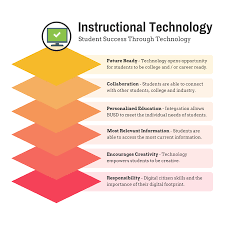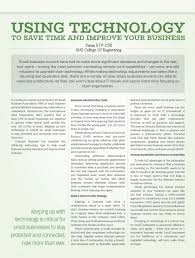The Role of Instructional Technology in Modern Education
Instructional technology is a rapidly evolving field that plays a crucial role in modern education. It encompasses the use of various tools, resources, and techniques to enhance teaching and learning experiences. In today’s digital age, instructional technology has become more important than ever in helping educators create engaging and effective learning environments.
Benefits of Instructional Technology
One of the key benefits of instructional technology is its ability to cater to diverse learning styles. By incorporating multimedia elements such as videos, interactive simulations, and online quizzes, educators can better engage students and facilitate deeper understanding of complex concepts.
Furthermore, instructional technology enables personalised learning experiences. With the help of adaptive learning platforms and data analytics, teachers can tailor educational content to meet individual student needs, allowing for more efficient and targeted instruction.
Challenges and Considerations
Despite its numerous benefits, instructional technology also presents challenges that educators need to address. One common concern is the digital divide – the gap between students who have access to technology at home and those who do not. To ensure equitable access to educational resources, schools must work towards providing all students with the necessary tools and connectivity.
Moreover, integrating instructional technology into the curriculum requires proper training for teachers. Educators need support and professional development opportunities to effectively utilise digital tools in their teaching practices and maximise their impact on student learning outcomes.
The Future of Instructional Technology
As technology continues to advance at a rapid pace, the future of instructional technology looks promising. Innovations such as virtual reality (VR), augmented reality (AR), and artificial intelligence (AI) are reshaping the way we teach and learn. These technologies have the potential to revolutionise education by creating immersive learning experiences and providing personalised feedback in real time.
In conclusion, instructional technology has become an essential component of modern education. By harnessing the power of digital tools and resources, educators can enhance teaching effectiveness, promote student engagement, and prepare learners for success in an increasingly digital world.
Maximising Learning: Six Essential Tips for Effective Use of Instructional Technology
- Ensure that instructional technology aligns with learning objectives.
- Provide adequate training and support for teachers to effectively use instructional technology.
- Encourage interactive and engaging activities through the use of instructional technology.
- Regularly assess the effectiveness of instructional technology in enhancing learning outcomes.
- Stay updated on new trends and advancements in the field of instructional technology.
- Promote a balance between traditional teaching methods and innovative instructional technology tools.
Ensure that instructional technology aligns with learning objectives.
To maximise the effectiveness of instructional technology, it is crucial to ensure that it aligns seamlessly with the intended learning objectives. By carefully integrating digital tools and resources that directly support the educational goals and outcomes, educators can create a cohesive learning experience that enhances student understanding and engagement. This alignment ensures that instructional technology serves as a valuable aid in achieving specific learning targets, ultimately leading to more meaningful and successful educational outcomes.
Provide adequate training and support for teachers to effectively use instructional technology.
To maximise the benefits of instructional technology in the classroom, it is crucial to provide teachers with comprehensive training and ongoing support. Equipping educators with the necessary skills and knowledge to effectively integrate digital tools into their teaching practices ensures that they can leverage technology to its full potential. By offering continuous professional development opportunities and access to technical assistance, schools can empower teachers to create engaging and innovative learning experiences that enhance student outcomes and foster digital literacy skills.
Encourage interactive and engaging activities through the use of instructional technology.
Encouraging interactive and engaging activities through the integration of instructional technology is a powerful strategy to enhance the learning experience. By incorporating digital tools such as educational apps, multimedia presentations, and interactive simulations, educators can create dynamic and immersive learning environments that captivate students’ interest and foster active participation. This approach not only makes learning more enjoyable but also promotes deeper understanding and retention of concepts, ultimately leading to more effective educational outcomes.
Regularly assess the effectiveness of instructional technology in enhancing learning outcomes.
It is essential to regularly assess the effectiveness of instructional technology in enhancing learning outcomes. By evaluating how well digital tools and resources are contributing to student engagement, understanding, and achievement, educators can make informed decisions on refining their teaching strategies. Continuous assessment allows teachers to identify areas for improvement, tailor instruction to meet specific learning needs, and ultimately maximise the benefits of instructional technology in promoting positive educational outcomes.
Stay updated on new trends and advancements in the field of instructional technology.
It is essential for educators to stay updated on new trends and advancements in the field of instructional technology. By keeping abreast of the latest developments, teachers can leverage innovative tools and strategies to enhance their teaching practices and create more engaging learning experiences for students. Whether it involves exploring new software applications, incorporating virtual reality simulations, or utilising data analytics for personalised learning, staying informed about emerging trends in instructional technology is key to fostering continuous improvement and effectiveness in education.
Promote a balance between traditional teaching methods and innovative instructional technology tools.
To maximise the benefits of instructional technology, it is essential to promote a balance between traditional teaching methods and innovative digital tools. While traditional teaching approaches provide a solid foundation, integrating modern instructional technology tools can enhance engagement and facilitate more interactive learning experiences. By striking a balance between the two, educators can cater to diverse learning styles, adapt to changing educational landscapes, and ensure that students receive a well-rounded education that combines the best of both worlds.




